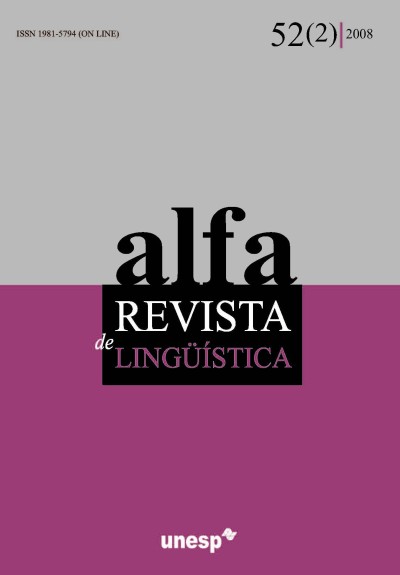Thoughts on the phonological interpretation of {nasal,oral} contour consonants in some indigenous languages of South-America
Palavras-chave:
Contour consonants, Enhancement, Amerindian languages,Resumo
An intriguing feature of the Americas as a linguistic area is the frequent occurrence of oral/nasal contour consonants. In this paper we will study a number of languages that have these sounds and discuss the explanations based on the enhancement of phonological contrast that should account for their occurrence. One of these explanations considers the nasal phase of a contour consonant as the enhancement of an underlying voice contrast; the other explanation regards the oral phase realized on an underlying nasal consonant as a strategy to maintain a neat oral/nasal contrast on vowels. In this way the different enhancement-based theories presuppose different underlying segments from which the contour sounds are derived. In some cases, the synchronic source of the contour segments seems undisputed, either because the language is lacking the contrast that is to be enhanced, or because it uses the secondary (enhancement) feature contrastively. The phonological interpretation of contour sounds becomes more diffi cult in the numerous languages that have both a nasal/oral contrast on vowels and lack a phonemic opposition between voiceless /P/, voiced /B/ and nasal /N/. In these languages the view of enhancement as a feature of phonetic implementation is dubious. Rather, the enhancing feature seems to play a role in the choice of underlyingly contrastive segments.
Downloads
Downloads
Publicado
Como Citar
Edição
Seção
Licença
Os manuscritos aceitos e publicados são de propriedade da Alfa: Revista de Linguística. É vedada a submissão integral ou parcial do manuscrito a qualquer outro periódico. A responsabilidade do conteúdo dos artigos é exclusiva dos autores. É vedada a tradução para outro idioma sem a autorização escrita do Editor ouvida a Comissão Editorial.

